To lay the groundwork, we were able to discover the game Blades of Fire from the beginning of the adventure, just after the introduction. This was a good thing, since it allowed us to take advantage of the tutorial, thus avoiding feeling too lost, especially for newcomers who might not be familiar with the genre. It was also an opportunity to discover more precisely the stakes.
An ancient world torn by war
The story of Blades of Fire takes root in the distant past, where a race of legendary giants, called the Forgers, ruled the world. Their civilization shone with its grandeur, until a devastating war caused their downfall. In a final act of wisdom, they created humans to succeed them and entrusted them with their greatest secret: the power of Steel. Thanks to this knowledge, humanity has established itself as the new dominant force.
Thousands of years later, this legacy is threatened. Queen Nerea, a formidable ruler, has used powerful magic to transform her enemies' steel into stone, thus turning the Forgers' knowledge against humanity itself. It is in this world on the brink that our hero's destiny is played out. You can feel it coming: chaos is coming, and harsh trials await our protagonist.
Precisely, at this level, the player embodies Aran de Lira, son of the commander of the royal guard. A childhood friend of Princess Nerea and Prince Erin, he grew up alongside the royal family before a tragic event turned his life upside down. This trauma has deeply marked him, but he refuses to let himself be overwhelmed by his past. Determined and resilient, Aran accepts a most dangerous mission: to eliminate his former friend to save humanity. A heavy destiny to bear, which will push him to face the dangers of a merciless world. This is where the adventure begins...
And this ruthlessness is not limited to the game's narrative universe, it is also felt in its gameplay. Very quickly, Blades of Fire sets its tone: brutal, intense, and uncompromising. Here, survival hangs by a thread, and every mistake comes at a high price. The game doesn't try to spare the player, immediately plunging them into a world where the threat is omnipresent.
This brutality is also reflected in the careful character design and the distinctive aesthetics of the monsters, like the imposing troll that we face from the start. Even our hero bears the marks of this merciless world: his scarred face alone tells of a past of violence. As for the creatures he faces, their nightmarish appearance is only a foretaste of the horror that awaits the player.
Because it is especially during the first fights that we fully grasp the essence of the game: a demanding gameplay where every confrontation counts. A true pillar of the experience, combat is central.
Fights where every blow counts
Because yes, combat in Blades of Fire is not just a series of attacks and dodges. The game takes this even further by integrating a system where strategy is essential, like souls-like games. Moreover, while the developers didn't explicitly use this term during the presentation, one of them told us that the game shares many similarities with this genre, both in its approach and its mechanics. Here, charging headlong only leads to certain death: you have to analyze your enemies, choose your weapons carefully, and exploit their weaknesses.
Indeed, the opponents' armor plays a central role. Each enemy can be protected by different pieces of equipment covering the head, torso, and arms. It will therefore not be enough to attack randomly, but to precisely target the most vulnerable areas to hope to gain the advantage.
A color code to help
To help the player, a color code is displayed around the enemy. If the indicator is green, the attack will inflict maximum damage, because the area is poorly protected. On the other hand, if the color is orange, the armor will absorb some of the damage. Finally, if the enemy is surrounded by red, the attack will bounce without effect, rendering the blow useless.
The choice of weapon then becomes essential. Each has specific properties and can inflict different types of damage. A sharp blade will be effective against light armor, while a piercing weapon will be more suited to piercing rigid protection. Conversely, a mace or hammer will be formidable against heavy armor. You will therefore have to adapt your fighting style and alternate between weapons depending on the enemies' equipment. It's simply exhilarating to play, as the game forces you to constantly adapt during confrontations. Since it's possible to face several enemies at once, each fight becomes a true test of concentration and reactivity. Here, the slightest hesitation can be fatal, and everything sometimes comes down to a split second.
To survive, it's not enough to have good reflexes: you also need to know the controls like the back of your hand and chain actions together with almost instinctive precision. Which, of course, was quite complex for us during the first hour. The slightest false move or a second of delay could mean your death. As a result, the fights were particularly tense. Dying five to ten times against a mid-boss is commonplace, especially if you don't have the right weapon at the right time. The game is quite uncompromising and leaves no room for error. It's better to enjoy a challenge and have an affinity for Souls-like games, because otherwise, the game can quickly become frustrating, even discouraging.
Equipment that wears out
For even more difficulty, another important element to take into account is weapon wear. The longer a fight drags on, the more your equipment loses its effectiveness. A durability bar allows you to track the weapon's condition in real time. As it deteriorates, its damage decreases and it becomes less effective against certain armor. You'll therefore need to remember to repair it regularly to avoid finding yourself in trouble at the worst possible moment.
Especially since weapons seem to melt like snow in the sun, requiring rigorous maintenance management. Fortunately, it's possible to repair them by finding anvils scattered across the map. They don't just serve as equipment maintenance: they also act as mini rest and save points, providing a brief respite before diving back into the action. Their arrangement generally follows a fairly regular interval, thus avoiding overly long phases without the possibility of maintenance, while maintaining constant pressure on the player. It's a bit like the campfire in Dark Souls, but with a blacksmith twist.
Forging your weapons, another pleasure of the game
Repairing is good, but the true essence of Blades of Fire lies in its forging system, a central element of the game, both in the gameplay and in the lore. Here, weapons are not simple objects that you pick up: they are at the heart of the Forgers' heritage, and it is up to the player to shape them themselves. And this customization goes far beyond a simple choice of weapon. Every detail counts: you choose the shape of the blade, the handle, the materials used, the alloys...
All of this directly influences its power, its durability, and its handling. The more successful the forging, the higher the quality of the weapon, and its star level determines how many times it can be repaired before becoming unusable. To award stars to your weapon, you must successfully complete a smithing mini-game. The principle is simple: you must follow the weapon's pattern as closely as possible by adjusting curves within precise markers. The more precise your drawing, the higher the number of stars awarded.
But that's not all. The length of the blade impacts the weapon's balance and responsiveness, requiring you to find the right compromise between range and maneuverability. Each player can thus experiment with different styles to design the weapon that best suits their way of fighting, whether it's a long and sharp sword, a heavy and destructive axe, or a crushing warhammer. And yet, we've probably only seen a fraction of the possibilities offered by this system. Between rare materials, advanced alloys, and new combinations, smithing promises to be an aspect as deep as it is strategic, bringing real richness to the gaming experience.
The game of seven families for Blades of Fire
The game offers seven main weapon families, as Enric Álvarez, founder of the studio (behind Metroid Dread), explained to us during our interview. A pleasure for fans of medieval equipment from which the game draws inspiration. Each type of weapon has its own strengths and weaknesses, and the player can carry up to four simultaneously, offering great flexibility to adapt their strategy in the middle of combat. Changing weapons at the right time becomes essential to adapt to enemies and maximize their effectiveness.
The combat is clearly not half-baked. Here, each confrontation is visceral, brutal, and terribly impactful. It's not just about lowering a life bar above an enemy's head: blows leave marks, shattering armor, severing limbs, and crushing skulls in a spectacle of unabashed violence. These aren't just staged finishing moves; the entire fight exudes ferocity, with each blow landing a real weight and a palpable sense of power.
And to craft the perfect weapon and crush as many skulls (or other delights) as possible, you'll need to explore the world in search of valuable resources, primarily rare metals. Far from being a simple sideline, exploration and gathering are essential: each material collected will be used to craft the weapons that will make the difference in combat, making forging and survival deeply linked.
Exploration to find the materials to craft our weapons
Exploration is an essential component of Blades of Fire. The map seems to offer rich and detailed environments, with a real feeling of freedom, despite a world structured in semi-open areas. As Enric Álvarez was able to explain to us.
As mentioned previously, the anvils scattered throughout the world play a key role. They are not only used to repair weapons, but also to rest and recycle those that have become unusable. These will be strategic points, where the player can prepare their equipment before heading back into battle.
Exploration will be even more rewarding as many chests are hidden throughout, containing valuable resources to upgrade weapons at the forge or craft new ones. Because, as the developers have stated, the game does not offer any equipment loot system. Here, everything must be crafted or transformed from harvested materials, adding a dimension of management and planning to the player's progression.
One of the most successful aspects of Blades of Fire is also its level design, which is thought out in relief. Rather than just sprawling across vast, flat expanses, the game focuses on a great deal of verticality, with imposing buildings, steep cliffs, and tall structures that enrich exploration.
This design choice avoids monotonous landscapes and encourages the player to observe their surroundings from different angles, looking for hidden passages, high access points, or detours. This more organic approach to level design gives real depth to the environments, making exploration more dynamic and immersive.
A technique that serves gameplay in Blades of Fire
To top it all off, visually, the game is impressive at the moment. The graphics are detailed, the combat animations are fluid, and the lighting effects enhance the universe. Each fight is staged with particular care, making the experience very visceral. Without this extreme fluidity, the fights would clearly not have the same intensity. We really have the impression that each movement of the character is natural, which avoids that sometimes rigid and mechanical aspect, which can be found in a game like Kingdom Come Deliverance 2, for example.
WE ARE WAITING FOR IT… WITH IMPATIENCE!
With its demanding gameplay, immersive world, and promising forge system, Blades of Fire stands out as an atypical game. It borrows some codes from souls-like games without being completely one, positioning itself at the frontier of genres. A bold bet that seems poised to make it a serious challenger among demanding action-adventure games. It remains to be seen whether the level of polish will live up to the stated ambitions. What is certain is that despite the intense difficulty of the fights, we had only one desire: to return. The game is scheduled for May 22, 2025, on PC (via Epic), PS5, and Xbox Series.

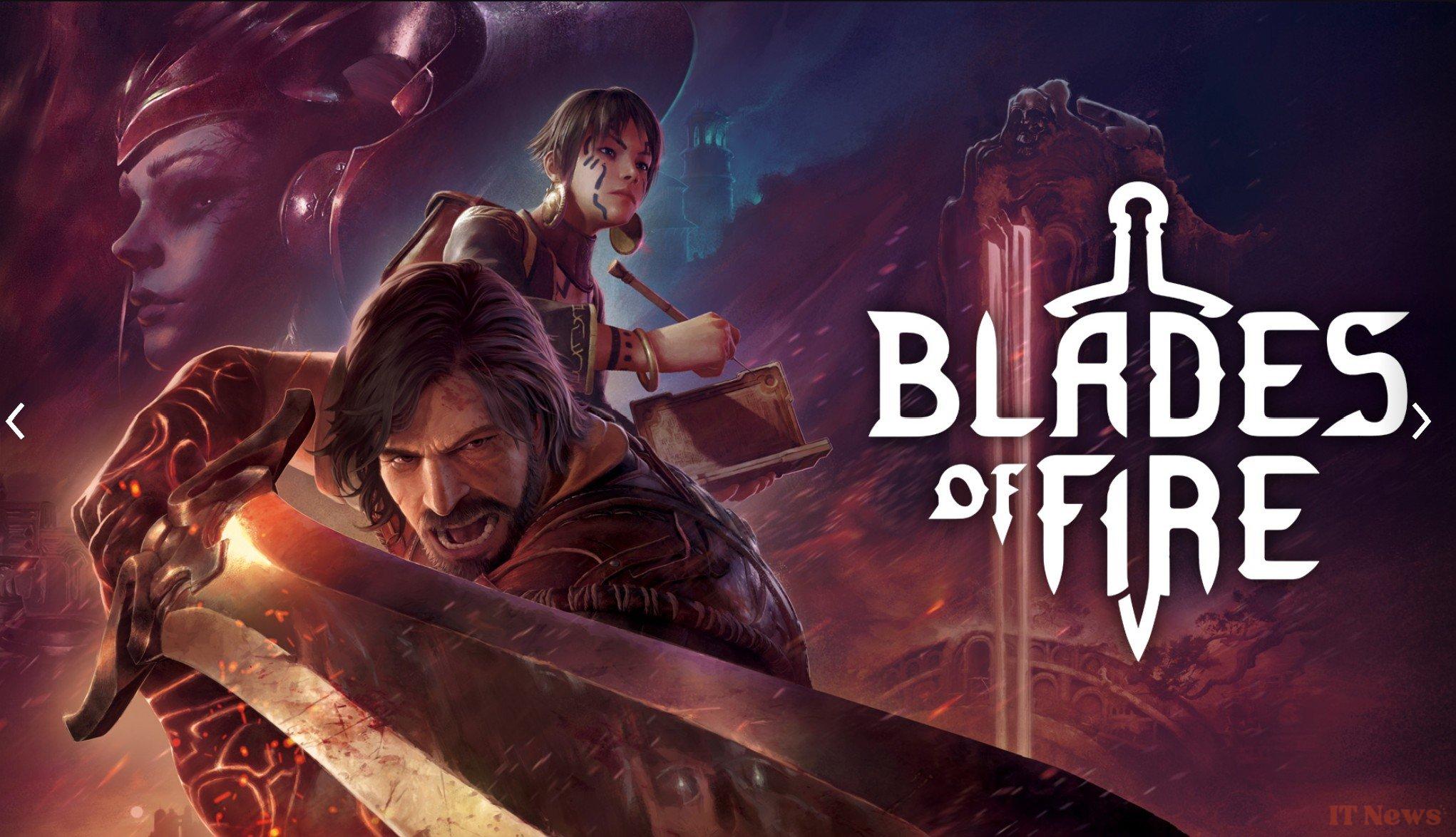
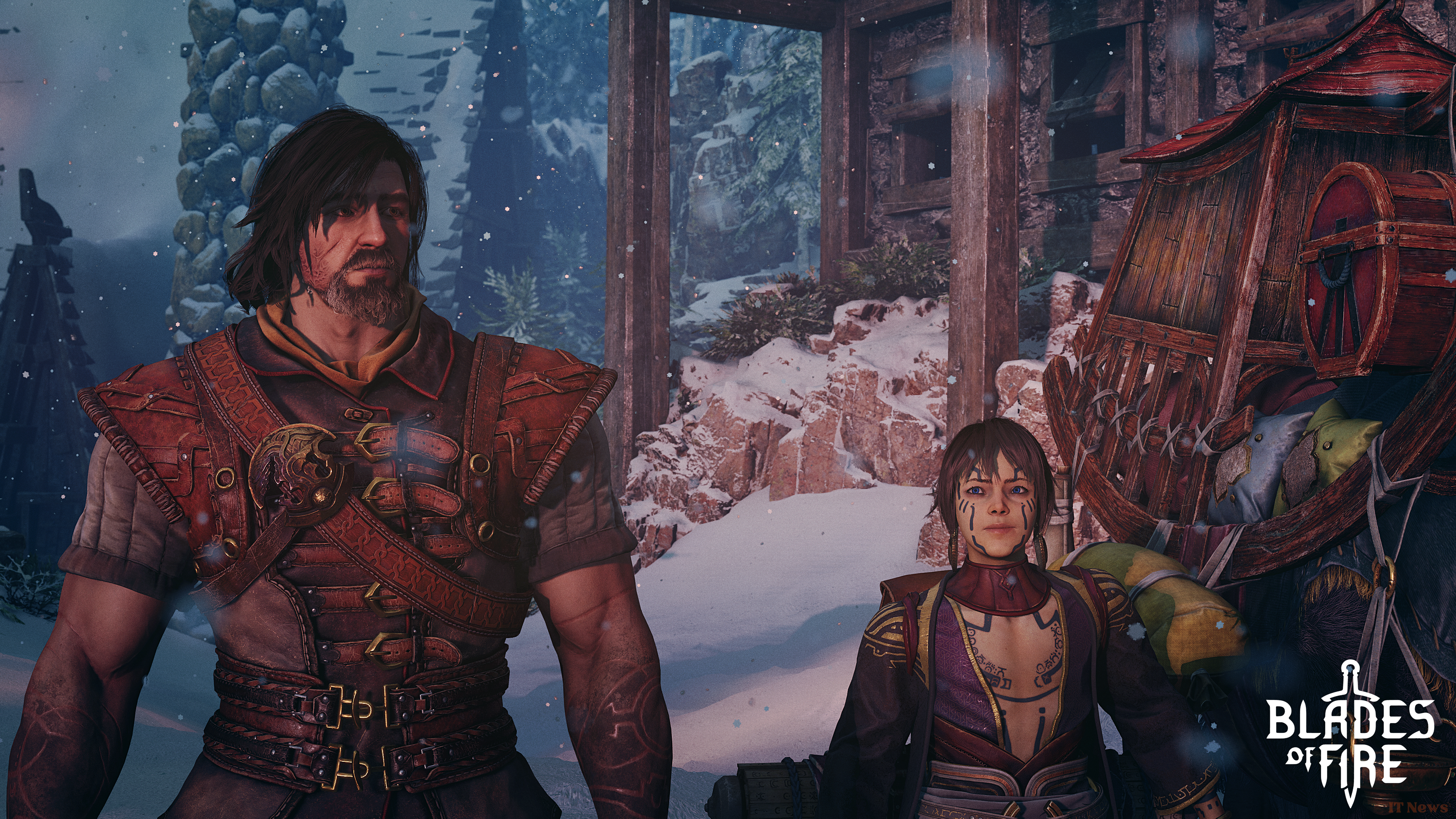

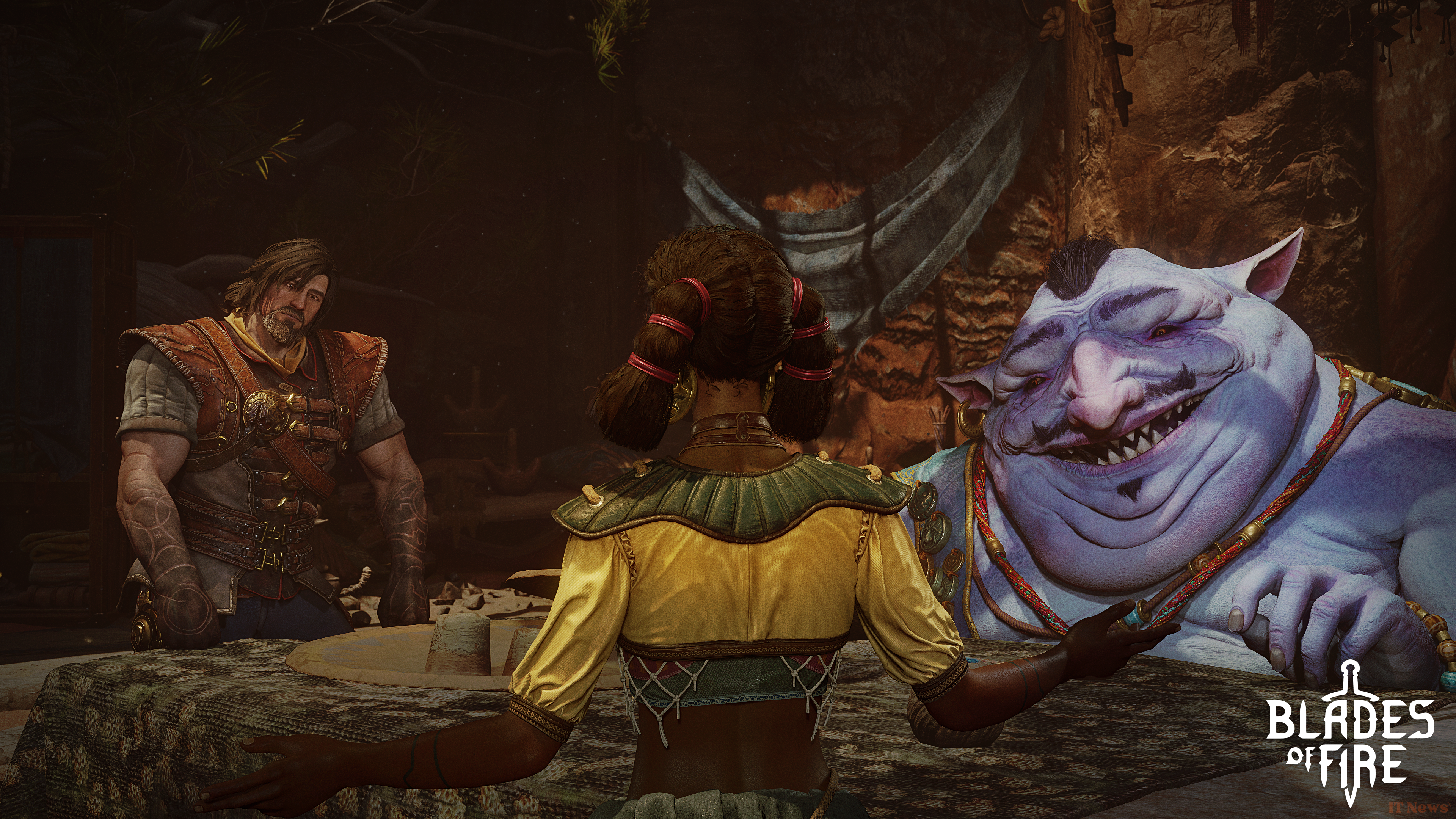
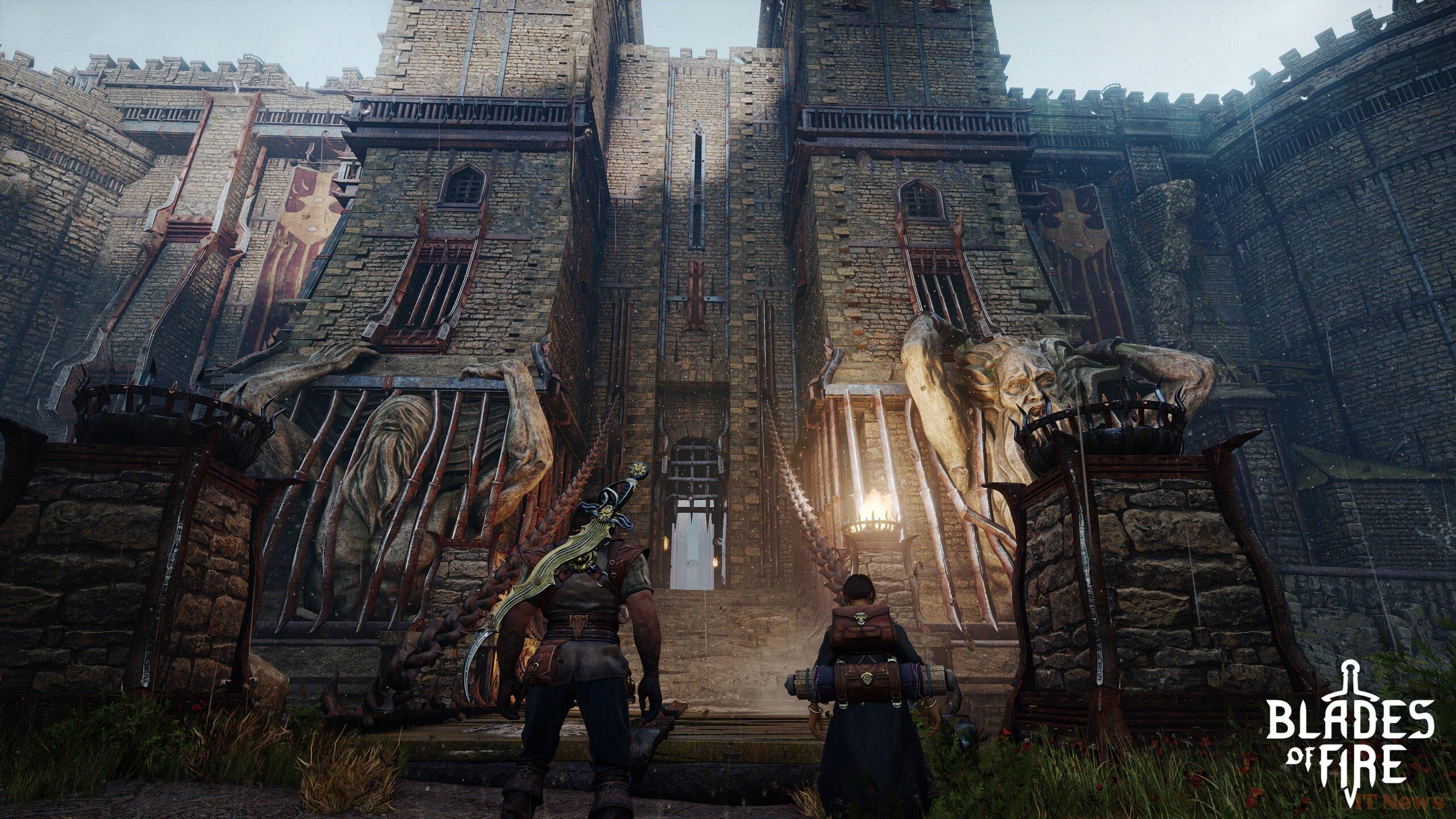
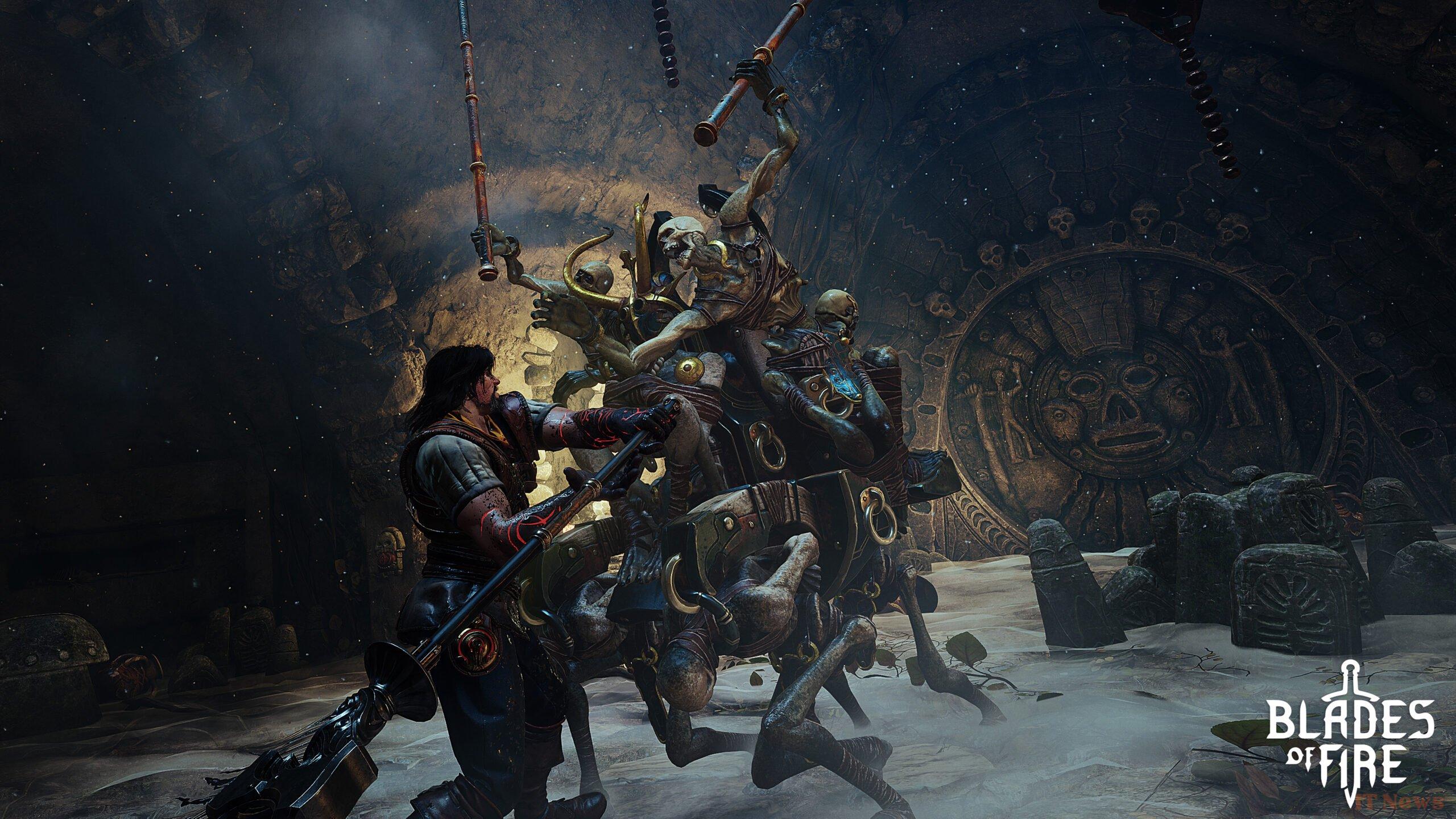

0 Comments